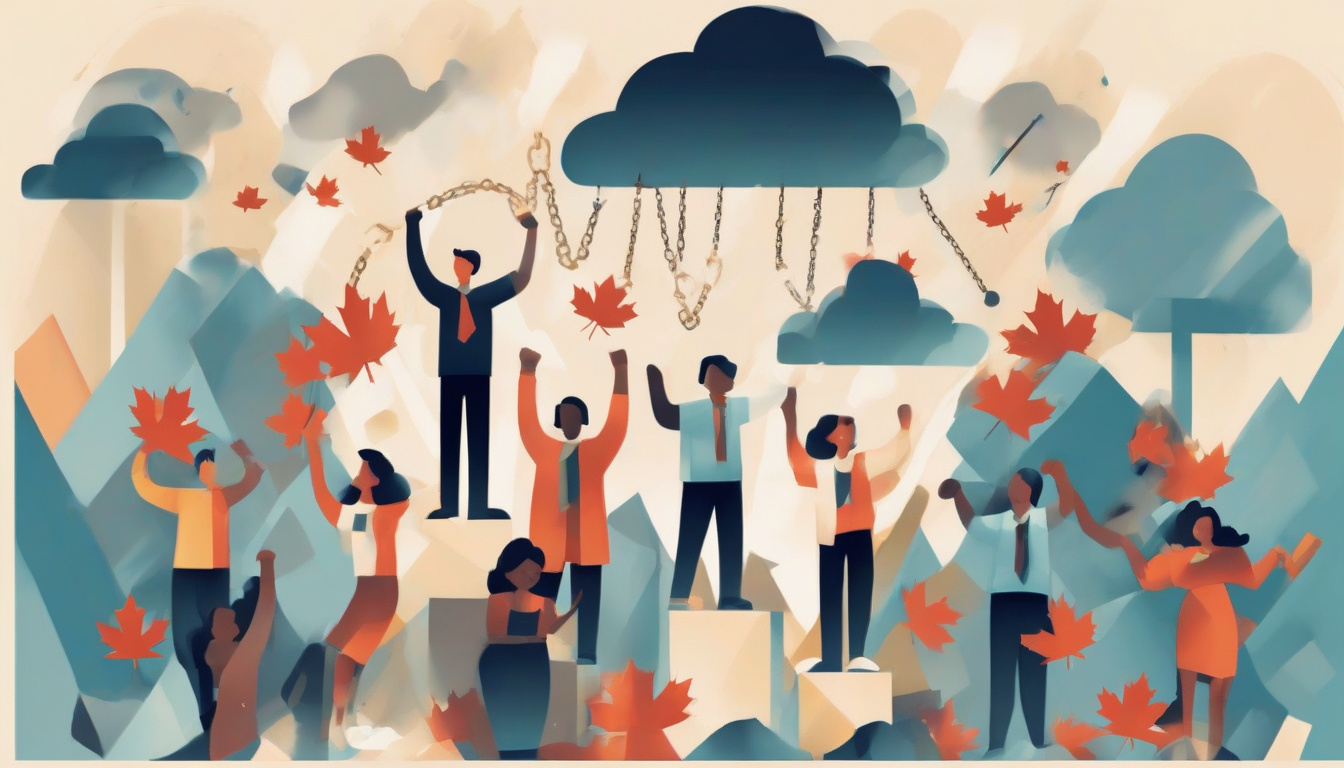Unlocking Financial Freedom: A Comprehensive Guide to Government Debt Relief Options
In today’s financial landscape, achieving financial freedom can feel like an overwhelming challenge, especially for those grappling with significant levels of debt. This is where government debt relief programs come into play, providing vital support to individuals seeking to regain control of their finances. Understanding the various government debt relief options available can empower you to make informed decisions that could ease your financial burden. In this comprehensive guide, we will explore the different types of government debt relief options, discuss eligibility criteria, outline the steps to apply for relief, and offer tips on maximizing the benefits of these programs. Whether you are struggling with student loans, credit card debt, or other financial obligations, this article aims to provide clear and actionable insights to help you on your journey to financial stability.

Key Takeaways
- Government debt relief programs offer various options to help individuals manage their financial burdens.
- There are multiple types of debt relief options available, including forgiveness, consolidation, and repayment plans.
- Eligibility for debt relief varies, often requiring specific criteria to be met based on financial situation and type of debt.
- Applying for government debt relief involves a clear process that includes gathering documentation and completing necessary forms.
- Maximizing debt relief benefits requires informed strategies, such as keeping track of deadlines and understanding program details.
Understanding Government Debt Relief Programs
Government debt relief programs are designed to assist individuals and businesses burdened by excessive debt, providing them with pathways to financial recovery. These programs often come in various forms, including loan forgiveness, repayment plans, and grants, aimed specifically at alleviating the financial stress that can accompany significant debt. Understanding the nuances of government debt relief is critical for debtors seeking to navigate their options effectively.
Typically, government debt relief programs target specific groups, such as students, small business owners, or homeowners facing foreclosure. For example, the Federal Student Aid program offers income-driven repayment plans, which adjust monthly payments based on the borrower’s income, and may even lead to loan forgiveness after a certain period of consistent payments. Additionally, the Small Business Administration (SBA) provides resources and guidance for small business debtors facing insolvency, including access to loans with favorable terms.
Taking advantage of these programs requires individuals to stay informed about eligibility criteria, application processes, and any potential impacts on credit ratings. Many government debt relief initiatives aim to not only ease individual financial burdens but also to stimulate broader economic recovery by empowering debtor populations to return to stability.
To maximize the benefits of these programs, it’s essential to approach them with a clear understanding of one’s financial situation and the specific terms of relief available. Engaging with financial advisors or nonprofit credit counseling services can also offer personalized insights into the most suitable options, ensuring a night-long term strategy for management and eventual recovery from debt.
Types of Government Debt Relief Options
When grappling with overwhelming financial obligations, understanding the various types of government debt relief options becomes crucial for individuals and businesses alike. Here are some prevalent forms of relief:
###
1. Debt Forgiveness Programs
Many governments have instituted debt forgiveness programs aimed at wiping out certain categories of debt, particularly for low-income individuals or specific sectors like education, where student loan forgiveness initiatives can provide substantial relief. For instance, the Public Service Loan Forgiveness (PSLF) program offers total forgiveness of federal student loans after 120 qualifying payments for those employed in public service roles.
###
2. Repayment Plans
These plans adjust your monthly payment obligations based on your income and financial situation. Governments often offer flexible repayment plans that extend the repayment period or reduce monthly payments, thereby making it more manageable for debtors to honor their obligations.
###
3. Consolidation Programs
Debt consolidation allows borrowers to merge multiple debts into a single loan with a lower interest rate. Government-sponsored programs can assist with consolidating debts such as student loans, credit cards, and medical bills, which can simplify payments and potentially reduce interest costs.
###
4. Bankruptcy Protection
While often viewed as a last resort, filing for bankruptcy can provide critical relief from debts. Chapter 7 and Chapter 13 bankruptcy offer different relief mechanisms that can help individuals restructure their debts or eliminate them entirely.
###
5. Financial Counseling Services
Many local and national initiatives provide free or low-cost financial counseling services aimed at helping debtors devise a budget and repayment strategy. These services can connect individuals with government resources, further assisting them in navigating their financial constraints.
###
6. Grants and Financial Aid
For those struggling with specific types of debt like student loans, various grants and financial aid forms exist to support debt relief. Government agencies may provide special funding designed to address specific economic challenges, easing the debt burden on eligible individuals.
###
7. Tax Relief for Debt Cancellation
In certain cases, the cancellation of debt may be considered taxable income. However, various tax relief programs exist, allowing eligible taxpayers to avoid being penalized for discharged debts, especially those received through government programs.
### Conclusion
Understanding the spectrum of government debt relief options available can empower individuals and businesses to make informed decisions about managing their financial burdens and ultimately achieving economic stability. Engaging with local agencies or financial advisors can further clarify which options are best suited to individual circumstances.
‘The best way to predict the future is to create it.’ – Peter Drucker

Eligibility Criteria for Debt Relief
Eligibility for government debt relief programs varies based on several factors that can determine your qualifications. Typically, individuals seeking assistance must demonstrate financial hardship, which may be assessed through income levels, outstanding debt amounts, and other financial obligations.
1. Income Requirements: Many relief programs target those with low or moderate incomes, establishing a maximum income threshold that families or individuals must not exceed to qualify for assistance. These thresholds often reflect the area’s median income to ensure that support is directed to those with the most pressing financial challenges.
2. Type of Debt: Generally, government debt relief options focus on particular types of debt, such as federal student loans, medical debt, or unsecured credit card debt. Borrowers must ascertain which debts are eligible under the specific program they are considering.
3. Outstanding Debt Levels: Programs may set a minimum amount of debt necessary to qualify for relief. For instance, some debt relief options are designed for individuals who carry significant debt burdens that they cannot feasibly pay off due to financial distress.
4. Documentation of Hardship: Applicants will typically need to provide proof of financial hardship, including pay stubs, bank statements, tax returns, and sometimes even proof of unemployment or medical expenses that contribute to their overall financial situation.
5. Credit Score Considerations: While many government debt relief options do not specifically disqualify based on credit scores, individuals with severely damaged credit may find it more challenging to access certain types of relief or have fewer options available. Understanding how your credit status affects your eligibility can be crucial to the application process.
## Additional Notes
• Residency Requirements: Some programs require applicants to be residents of the state or region where the debt relief program is offered, making it necessary for applicants to check local laws and regulations.
• Participation in Counseling: Certain programs may require applicants to complete credit counseling or financial education courses as part of the eligibility criteria to ensure they understand their financial situation and are better equipped to manage their debt post-relief.
Steps to Apply for Government Debt Relief
Applying for government debt relief can be a structured process that varies depending on the program you are interested in. Here are the essential steps you should follow:
###
1. Understand Your Financial Situation
– Assess your total debt, including credit cards, loans, and mortgages. Keep detailed records of your financial statements to understand exactly where you stand financially.
– Calculate your income and monthly expenses to determine your ability to repay debts. This will help frame your discussions with debt relief agencies.
###
2. Research Available Programs
– Investigate different government debt relief programs available to you. Programs can vary widely based on eligibility requirements, type of debt, or individual circumstances. Websites like the Federal Trade Commission (FTC) and Debt Relief Solutions provide a comprehensive overview of available options.
– Look into state-specific programs that might be available for local residents, as some states offer additional resources.
###
3. Verify Eligibility Requirements
– Each government debt relief program has specific eligibility criteria that you must meet. Review these requirements carefully to ensure you qualify. Most programs will consider your credit score, income, and debt-to-income ratio.
###
4. Gather Necessary Documentation
– Compile all necessary documents such as pay stubs, bank statements, tax returns, and details of your debts. This information will often be required when you apply.
###
5. Consult with a Nonprofit Credit Counseling Service
– Seek advice from a nonprofit credit counseling agency. These organizations can help you understand your options and assist in the application process for government programs. They often provide free services and guidance.
###
6. Complete the Application
– Follow the specific application process outlined for your chosen program. Be thorough in filling out forms and providing all requested information to avoid delays in approval.
###
7. Follow Up with Your Application
– After submitting your application, stay in contact with the relevant agency to monitor the status of your application. Be prepared to provide additional information if requested.
###
8. Review and Understand Your Approval
– If approved, carefully review the terms and conditions of your relief program. Make sure you understand your obligations and any implications related to your credit score or future borrowing capacity.
###
9. Implement a Repayment Strategy
– If the relief involves a repayment plan, create a budget that includes these payments. Developing a strategy to manage your future finances can prevent falling back into debt.
###
10. Continue Financial Education
– Finally, continue to educate yourself about managing your finances and avoiding debt in the future. Many government programs include access to financial education workshops as part of their support.
By following these steps, you can navigate the complexities of applying for government debt relief effectively. Always ensure to stay informed about any changes in government policies or new programs that may benefit you.

Tips for Maximizing Debt Relief Benefits
Debt can feel like a heavy burden, but there are strategies to maximize the benefits of government debt relief programs. First, it’s critical to understand the different types of government debt relief options available, such as loan forgiveness, income-driven repayment plans, and debt consolidation. Each option works differently, so knowing which one suits your financial situation is essential. Additionally, be sure to stay informed about any federal or state programs that may offer temporary relief, especially during economic downturns. It’s also beneficial to gather all necessary documentation, including proof of income, loan statements, and any relevant financial hardship letters, to streamline the application process for relief programs. Seek advice from financial counselors who are knowledgeable about government debt relief—they can provide tailored advice and help you avoid common pitfalls. Lastly, always be vigilant about maintaining good communication with your loan servicer. Keeping them updated about your financial status can sometimes lead to more favorable terms and conditions.
Frequently Asked Questions
What are government debt relief programs?
Government debt relief programs are initiatives designed to help individuals and businesses manage or reduce their debt through various means such as loan forgiveness, payment plans, or lower interest rates.
Who qualifies for government debt relief options?
Eligibility for government debt relief varies by program, but typically includes criteria such as income level, type of debt (e.g., student loans, federal debt), and financial hardship situations.
How can I apply for government debt relief?
To apply for government debt relief, you generally need to gather necessary documents, complete an application specific to the program, and submit it for review. Be sure to check the specific requirements for the program you are interested in.
What types of government debt relief options are available?
Types of government debt relief options include student loan forgiveness, income-driven repayment plans, debt settlement programs, and government-guaranteed loans, among others.
How can I maximize the benefits of government debt relief programs?
To maximize benefits, ensure you understand the terms of the relief options, stay organized with paperwork, communicate regularly with your lenders, and consider seeking advice from financial experts or counselors.
